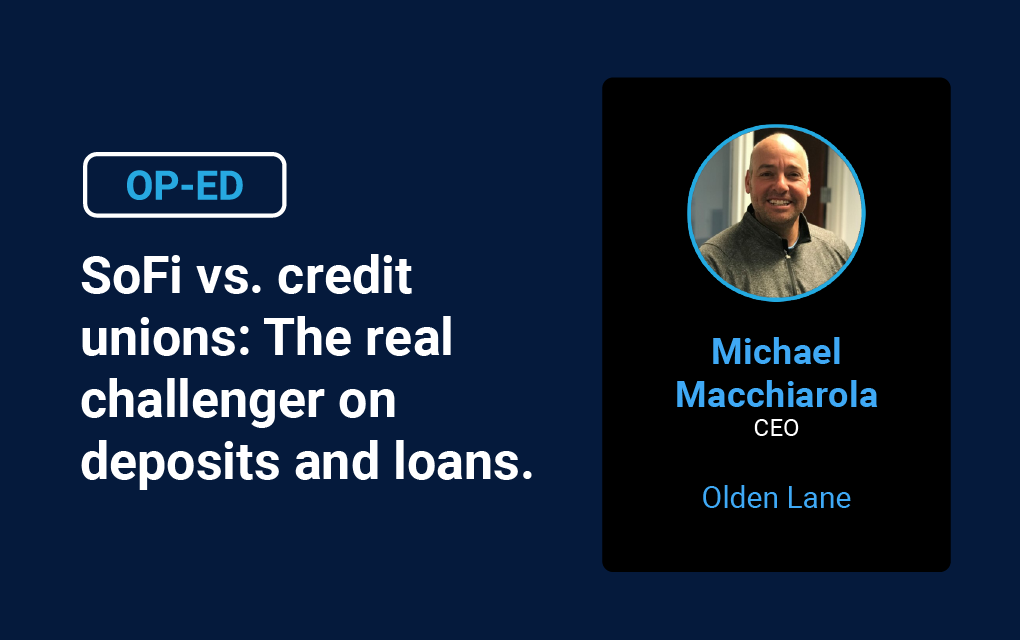SoFi vs. credit unions: The real challenger on deposits and loans.
Credit unions and community banks have long dominated the deposit gathering and consumer lending in the pockets of America uninteresting to the country’s bulge-bracket banks. No longer just a flashy brand on an NFL stadium, SoFi is a fast-scaling digital bank that is now credibly challenging credit unions on their home turf. And every credit union executive worth his/her salt would do well to flip through SoFi’s Q3 presentation of earnings.
SoFi’s Impressive Quarter
In its most recent earnings report (October 28, 2025), SoFi said total deposits climbed by $3.4 billion in a single quarter to $32.9 billion, fueled largely by direct-deposit members. The spectacular growth indicates the momentum SoFi’s platform has built around paycheck primacy.
On the lending side, SoFi delivered record loan originations of $9.9 billion, up more than 50% year over year, with personal loans leading and student/home lending contributing meaningfully. The surge reflects both product innovation and distribution advantages in SoFi’s app-centric model. According to its release, SoFi’s performance “was fueled by continuous innovations, including the introduction of interest-only periods for personal loans, new step-up repayment options for student loans, and home equity loans.”
The company also added more than 900,000 members in the quarter, bringing its total to nearly 12.6 million. This membership push represents a 35% YoY increase and continues to expand the top of the funnel that later converts into deposit and borrowing relationships. There is evidence that this is only the beginning, as the earning report notes that “[w]ith continued investment to build SoFi into a trusted household name, unaided brand awareness accelerated to an all-time high of 9.1% – an increase of over 4x in just four years.”
Taken together, SoFi’s numbers illustrate an impressive challenger executing a classic scale play. The playbook is as simple to articulate as it is difficult to execute:
- Win the paycheck (deposits)
- Deepen engagement (products / membership)
- Monetize via credit (loan originations)
SoFi’s $3.4 billion QoQ deposit build underpins lower funding costs and supports asset growth. Its $9.9 billion in quarterly originations showcases demand capture across categories. For many credit unions, these growth numbers will stand out against steadier (albeit slower) systemwide trends.
Story continued below…
FREE PAMPHLET
Stablecoins threaten small financial institutions — but there’s a fix.
If you lead a community bank or credit union, you’ve likely heard the buzz: issue a stablecoin, tokenize your deposits, or risk being left behind. Yet amid the noise, one question stands out—how can local institutions modernize without draining liquidity or sacrificing their core mission of lending to Main Street?
Comparing Credit Union Numbers
By way of comparison, in Q3, the entire credit union industry grew total deposits by $7 billion (from $2.042 billion to $2.049 billion) and loans by $18 billion (from $1.696 billion to $1.714 billion). At the same time, total credit union membership across the country grew by roughly 920,000 – from 145 million to 145.9 million.
The daunting reality is that SoFi’s capture of deposits, and loans last quarter matches roughly 49%, and 55% of the total growth of the nation’s 4,400 credit unions. On the membership side, SoFi incredibly matched the growth of the entire credit union industry, with each adding a little more than 900,000 members.
Why It Matters for Credit Unions
The SoFi model offers three important lessons for today’s credit unions:
- Distribution has shifted. SoFi’s owned media (its app) and in-venue QR activations compress the journey from awareness to account opening into seconds. This is an area where many credit unions still rely on branch visits or traditional media to nudge action. Geographic moats are simply being bridged by better, faster and more efficient digital solutions. This reality grows more troubling as we consider that each marginal member gained (i.e. younger) is increasingly comfortable with the SoFi-style journey while each marginal member lost is a product of the more traditional model (i.e. older).
- Funding flywheel. Rapid deposit growth at scale improves the funding mix and can support competitive pricing on loans. This is another disadvantage for credit unions that depend on slower-moving member share growth.
- Product breadth and cross-selling. With a broad financial suite, SoFi converts its new members into multi-product households at a good clip. This sustains high growth in both balances and fee revenue, a lever that compounds its advantage over time.
Bottom Line
If the last year signaled anything, it is that SoFi’s digital acquisition engine is a force to be reckoned with. It is translating into fast deposit growth and surging loan originations. Credit unions will have to invest heavily to compete digitally. At the same time, they will need to re-double efforts to leverage local relationships and member trust to keep up.
Olden Lane is a boutique financial services firm dedicated to the credit union industry.
Disclaimer
The views, opinions, and perspectives expressed in articles and other content published on this website are those of the respective authors and do NOT necessarily reflect the views or official policies of Tyfone and affiliates. While we strive to provide a platform for open dialogue and a range of perspectives, we do NOT endorse or subscribe to any specific viewpoints presented by individual contributors. Readers are encouraged to consider these viewpoints as personal opinions and conduct their own research when forming conclusions. We welcome a rich exchange of ideas and invite op-ed contributions that foster thoughtful discussion.










